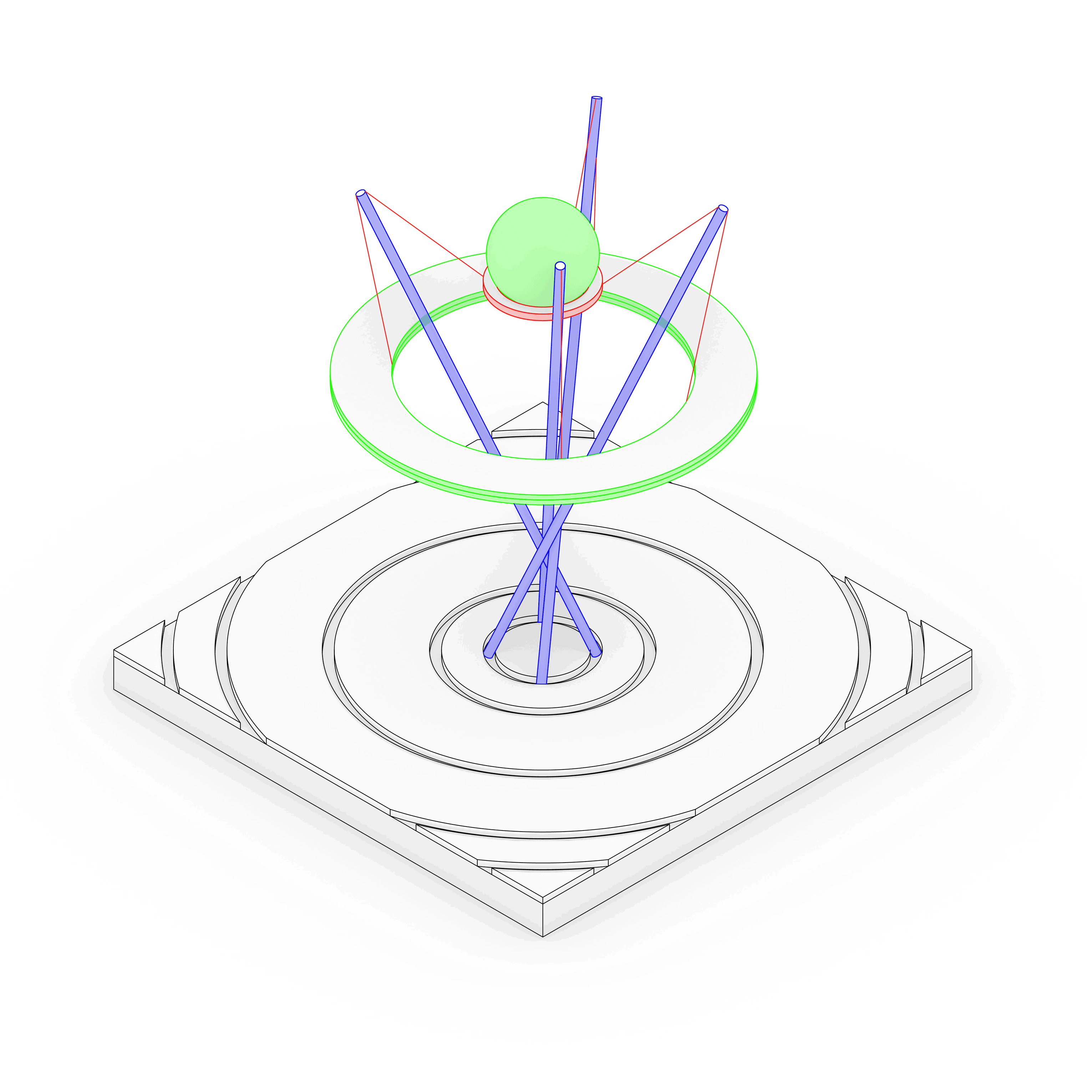Rice Architecture
21EM_X04
EQUILIBRIUM MODEL / EXPERIMENT FOUR
Joushua Chiang
Rafe Hessikiel
Van Pham
Emily Ryan
Our equilibrium model experiments with the design of a teepee as a structural basis and alters the internal and external forces by repositioning four poles to slowly form an inverted teepee and further asymmetrical variations. The base of the structure contains engraved concentric circles used as a base for the supporting poles to modulate in position and angle. The four poles lean on each other, evenly distributing the compression forces. However, as we drastically alter the teepee position and orientation, the evenly distributed compression forces on the poles are no longer enough to properly balance the central spherical mass. To solve this problem and rebalance to structure we added necessary internal and external tensile forces to equalize for the uneven forces.
PHYSICAL MODEL







DIGITAL MODEL




















